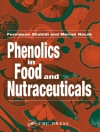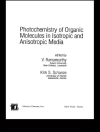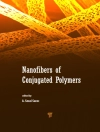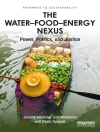Covers varieties of materials and sensing devices. An invaluable resource for researchers working in sensors and organic electronics.
Das E-Book Organic and Inorganic Materials Based Sensors wird angeboten von Wiley-VCH Gmb H und wurde mit folgenden Begriffen kategorisiert:
Anorganische Chemie, Chemie, Chemistry, Electrical & Electronics Engineering, Elektrotechnik u. Elektronik, Inorganic Chemistry, Materials Science, Materialwissenschaften, Organische Chemie, Sensor, Sensor Materials, Sensoren, Sensoren, Instrumente u. Messung, Sensors, Instrumentation & Measurement
Inhoudsopgave
Volume 1:
Chapter 1. Introduction: State of the Art, New Challenges and Opportunities of Sensory Devices, Polymer Based Nano-Bio Materials, Opto-Electrochemical Devices as Sensors
Chapter 2. Introduction to Metal-Organic Frameworks
Chapter 3. Organic Sensors: Materials and Applications
Chapter 4. Organic-Inorganic Composite Semiconductor Sensors
Chapter 5. Exciplex-Excimer Emission from Organic Molecular Dyad
Chapter 6. Organic-Inorganic Hybrid Hydrogels as Smart Strain Sensors
Chapter 7. Organic Molecules as Sensory Devices for Selected Toxic Heavy Metals
Chapter 8. Metal-Organic Frameworks with Electronic Devices and Chemical Sensors
Chapter 9. Electronic Metal-Organic Framework Sensors
Chapter 10. MOF Thin Films as Electrochemical Sensor
Chapter 11. Chemometrics and Sensor Arrays
Chapter 12. Organic Small-Molecule Mechanofluorochromic Materials
Chapter 13. Organelle-Specific DNA p H Sensors
Chapter 14. Colorimetric Chemosensors for the Detection of Environment Polluting Arsenite and Cyanide
Chapter 15. Organic Electronics and Their Applications as Sensors
Chapter 16. DNA Biosensorsf
Chapter 17. Bio-Inspired Transistors
Chapter 18. Aggregation Induced Emission Bioprobe for Protein Detection and Imaging to Screen the Human Diseases
Chapter 19. Biodegradable Electronics
Volume 2:
Chapter 20. Hybrid Nanomaterials for Biosensors
Chapter 21. Nanomaterial-Based Transistors for Chemical and Biological Sensing
Chapter 22. Nanomaterials in Optical Array Based Sensing
Chapter 23. Organic Nanocrystals as Optical Sensors
Chapter 24. Conductive Polymer-Based Sensors
Chapter 25. Organic Polymers for Sensing Devices
Chapter 26. Polymeric Materials with Mechanochromic Properties
Chapter 27. Conductive Polymers in Gas Sensors
Chapter 28. Hybrid Sensor Configurations
Chapter 29. Flexible Dual-Gate Organic Field-Effect Transistors for Pressure Sensing
Chapter 30. Optical Sensor in Optoelectronic Applications
Chapter 31. Reversible Guest-Induced Long-Lasting Luminescence
Chapter 32. Vapochromic and Vapoluminescent Sensors: Optical Versions of Electronic Noses
Chapter 33. Electronic Tongue
Volume 3:
Chapter 34. Luminescent and Photonic Materials for Sensing Applications
Chapter 35. Self-Recovering Mechanochromic Luminescence
Chapter 36. Chiral Sensor Based on Field Effect Transistor
Chapter 37. Electrochemical and Biomedical Sensors Based on Layered Double Hydroxides
Chapter 38. Molecular Imprinting Technology Based Electrochemical Sensors for Biomolecules
Chapter 39. Aggregation-Induced Emission and Piezochromic Luminescence Phosphor
Chapter 40. p H Sensor Designed for Cancer Cell Discrimination
Chapter 41. Resistive Sensors for Continuous Monitoring of Air Pollution
Chapter 42. Toxic E-Waste Terminator: Green and Biodegradable Electronics
Chapter 43. Carbon Disposable Multifunctional Sensors
Chapter 44. Sensor Ecosystems for Health Self-Monitoring: Focus on Diabetes Management
Chapter 45. Investigation of Microwave Resonant Sensors for Use in Detecting Changes of Non-Invasive Blood Glucose Concentration
Chapter 46. Application of Biosensors for Detection and Monitoring of Water Quality
Chapter 47. Sensor Principles for Digital Sound Twin
Chapter 48. Ultra-Sensitive Phosphorescence Sensor
Chapter 49. Advances in Gold Nanoparticles for Optical Detection of Nerve Agents
Over de auteur
Dr. Sangita Das is working as post-doctoral research fellow at Durham University, England, UK. She received her B. Sc. Degree with Honours in Chemistry in 2008 from University of Calcutta, West Bengal, India. She obtained her M. Sc. Degree in Chemistry with Organic specialization in 2010 from University of Calcutta, Kolkata, West Bengal, India. She had qualified the all India (CSIR-JRF) NET, and then she joined ‘The Goswami Group’, Department of Chemistry, IIEST for her Doctoral work under the supervision of Prof. Shyamaprosad Goswami and obtained her Ph.D degree in 2016. She is now working as a Newton International Fellow in UK. Her current research activities include the development of compounds as HDAC inhibitors, experimental and theoretical investigations of electronic structure of transition metal complexes with redox noninnocent ligands, computational chemistry.
Prof. Sabu Thomas is currently Vice Chancellor of Mahatma Gandhi University, Kerala, India and the Founder Director and Professor of the International and Interuniversity Centre for Nanoscience and Nanotechnology, Mahatma Gandhi University, Kerala, India. He is also a full professor of Polymer Science and Engineering at the School of Chemical Sciences of Mahatma Gandhi University, Kottayam, Kerala, India. Prof. Thomas is an outstanding leader with sustained international acclaims for his work in Nanoscience, Polymer Science and Engineering, Polymer Nanocomposites, Elastomers, Polymer Blends, Interpenetrating Polymer Networks, Polymer Membranes, Green Composites, Nanomedicine and Green Nanotechnology. He has received a number of national and international awards.
Dr. Partha Pratim Das is presently working as a postdoctoral researcher in the Institute of High-Pressure Mineral Physics and Chemistry, Yonsei University, South Korea. He has completed both the B.Sc. (2008) and M.Sc. (2010) in Chemistry from Calcutta University, India. He has received Ph.D. in Science (Chemistry) in 2016 from Jadavpur University, India. His research area is focused on nanotechnology, synthesis and structure-properties correlation studies of different multifunctional nanomaterials under various conditions for mainly clean and sustainable energy and environmental applications.












